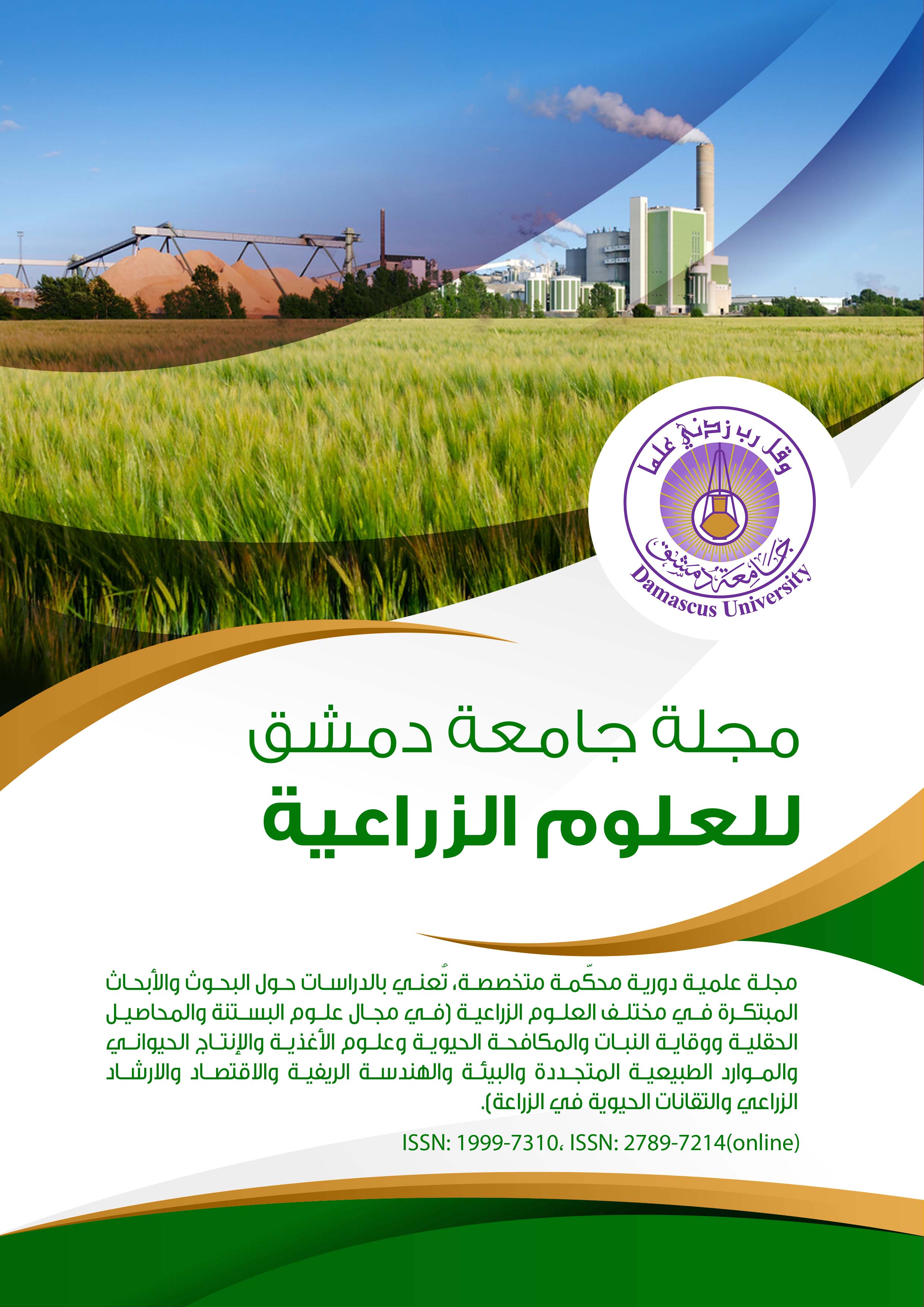Economics of Grape Production in the Central Region of Syria
Keywords:
Economic Analysis, Production Costs, Profitability Coefficient, Economic EfficiencyAbstract
The aim of this research is to study the production costs and returns of the grape crop in the central region of Syria, and to determine the volumes that achieve economic efficiency and profit maximization. 377 samples were collected from the Central Region for the agricultural season (2019 - 2018) the results of the study showed that the average cost of irrigated grape production (269148.49) sp / dunum, While the average achieved profit was (76451.5) SP / dunum, the cost of 1 kg on average (350.5) sp / dunum and The profitability coefficient in relation to the invested capital (28.4%). As for the rainfed grape crop, the average total costs and the average profit were (115803.4, 41696.5) SP / dunum, respectively., and the cost of 1 kg (257.35) SP, and the profitability coefficient in relation to the invested capital (36%), and therefore the economic evaluation of grape production in the study area indicates that it is profitable during the studied period. And by using standard economic models of the cost function, the achieved volume of economic efficiency was calculated and determined, which amounted to (4757.4, 7483.2) kg for the rain-fed and rain-fed grapes respectively.
while the profit-maximizing production amounted to (5031.7, 7914.3) kg for the rain-fed and rain-fed vineyards, respectively, while the actual production was (4377.6, 6885) kg for the rain-fed and bitter vineyards respectively, and by comparing these volumes with the average actual production of the studied area, it was found that it is much less than the profit-maximizing volume and relatively less than the optimal volume.

